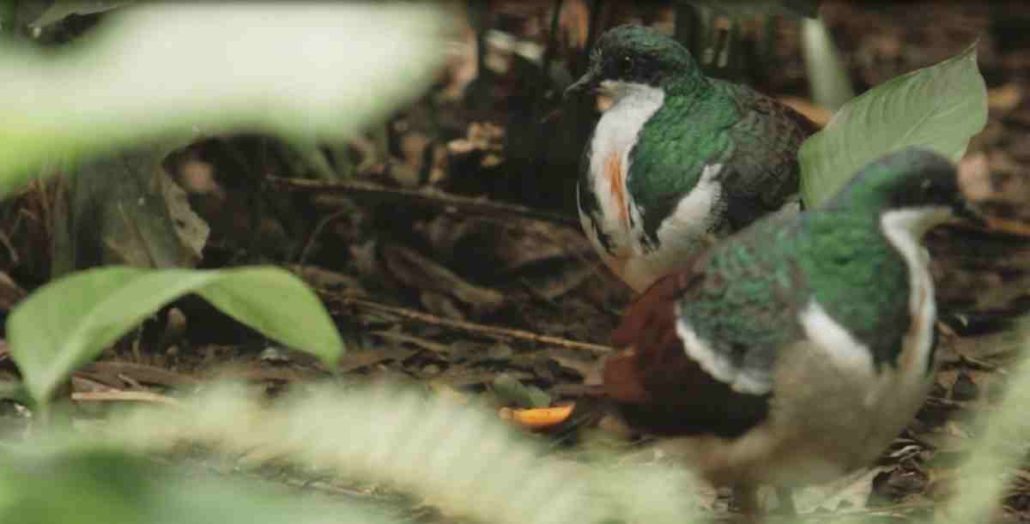
BY THE DEPARTMENT OF ENVIRONMENT AND NATURAL RESOURCES – REGION 6
THE WORLD is full of wondrous life forms. From the tiniest to the biggest living creature to have ever graced this Earth, Mother Nature never fails to amaze us.
Aside from us humans, plants and animals also form part of this shared space. We depend on wildlife and other natural resources for our most basic needs like food, medicines, clothing, shelter, and fuel. Thus, making sure that ecosystems thrive should be a priority by governments and ordinary citizens alike so that animal and plant species continue to exist in the future.
The United Nations General Assembly (UNGA) during its 68th Session on December 20, 2013 declared March 3 as United Nations World Wildlife Day (WWD). The said date also bares huge significance as the Convention on International Trade in Endangered Species of Wild Fauna and Flora (CITES) was inked in 1973.
To this day, the celebration has become an annual event all over the globe. This year’s theme was “Connecting People and Planet: Exploring Digital Innovation in Wildlife Conservation”, which aimed to explore how an increasingly more digital and interconnected world can push for sustainability, conservation, legal wildlife trade, as well as the coexistence of humans and wildlife as of the present and into the future.
The Philippines is one of the most biologically diverse countries in the world, boasting endemic plant and animal species found nowhere else. And here in Western Visayas, we can take pride of the unique flora and fauna found in our region, but it is not without challenges.
The Department of Environment and Natural Resources (DENR) issued the Department Administrative Order (DAO) 2019-09 which laid down the updated list of threatened species in the country. They can be considered as Critically Endangered (CR), Endangered (EN), Vulnerable (VU), and Other Threatened Species (OTS).
The Visayan spotted deer (Cervus alfredi) is found in the rainforests of Panay and Negros islands. It is one of the three endemic deer species found in the country. Its diet consists mostly of leaves, buds, and grasses.

Partly due to habitat loss and illegal hunting, the Visayan spotted deer’s numbers have dwindled and are now classified as Critically Endangered (CR) by DAO 2019-09.
The Visayan warty pig (Sus cebifrons), on the other hand, is a more elusive creature, also found deep in the jungles of Negros and Panay. They are characterized by a mane that partially covers their face and extends back to their loins. They are also classified as Critically Endangered (CR) by DAO 2019-09.

The remaining forests of Panay also host another critically endangered native reptile, the Panay forest monitor lizard (Varanus mabitang) which is arboreal and depends mostly on primary forests as their habitat.

Moving on to our avian pals, the Visayan Hornbill (Penelopides panini) also known as the Visayan Tarictic Hornbill, is a majestic bird that inhabits forest patches of Panay and Negros. Named after the sound that they make as perceived by the locals, they mostly eat fruits and rarely other smaller insects, ants, beetles, and worms.

The Visayan Hornbill mostly live in groups and are frequently found in the canopy of trees. The DAO 2019-09 describes them as a Critically Endangered (CR) species.
Another vibrant bird is the Negros bleeding heart pigeon (Gallicolumba keayi) with its distinctive red patch or so called its “bleeding heart”. It mainly resides in the forests of Negros and also in Panay. However, it is also classified as critically endangered.

A lot of native plant and tree species also exist in Western Visayas but one stands out, the Rafflesia speciosa, one of the types of the Rafflesia species, the largest flower in the world. It was first discovered by a group of Antiqueño mountaineers at Sibalom Natural Park, Sibalom, Antique in the year 2000.
A rare flower, Rafflesia has a reddish-orange hue and could reach up to 22 inches in diameter when in bloom during its season on the months of February to March.

It is unfortunate that these unique creatures are threatened due to destructive man-made activities that harm their natural habitats and food sources. The DENR Region 6 as well as private conservation groups are continuously doing efforts to save these species among others from the threat of extinction. Everyone is called upon to do their fair share in preserving our ecosystems so that native and endemic animals and plants can thrive. We must harness the power of the different technologies that we use every day, especially social media to spread the word and campaign for our wildlife. (DENR-6)



